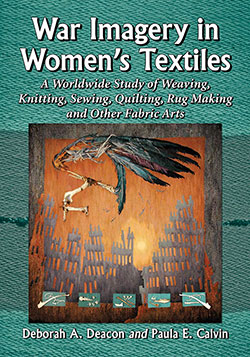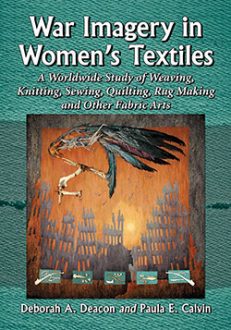War Imagery in Women’s Textiles
An International Study of Weaving, Knitting, Sewing, Quilting, Rug Making and Other Fabric Arts
$49.95
In stock
About the Book
Through the centuries, women have used textiles to express their ideas and political opinions, creating items of utility that also function as works of art. Beginning with medieval European embroideries and tapestries such as the Bayeux Tapestry, this book examines the ways in which women around the world have recorded the impact of war on their lives using traditional fabric art forms of knitting, sewing, quilting, embroidery, weaving, basketry and rug making. Works from the United States, Canada, Latin America, Asia, the Middle and Near East, and Oceania are analyzed in terms of content and utility, and cultural and economic implications for the women who created them are discussed.
Traditional women’s work served to document the upheaval in their lives and supplemented their family income. By creating textiles that responded to the chaos of war, women developed new textile traditions, modified old traditions and created a vehicle to express their feelings.
About the Author(s)
Bibliographic Details
Deborah A. Deacon and Paula E. Calvin
Format: softcover (7 x 10)
Pages: 260
Bibliographic Info: 56 photos (19 in color), glossary, notes, bibliography, index
Copyright Date: 2014
pISBN: 978-0-7864-7466-0
eISBN: 978-1-4766-1660-5
Imprint: McFarland
Table of Contents
Table of Contents
Preface 1
Introduction 3
One. Europe 19
Two. The United States of America 44
Three. Canada 72
Between pages 96 and 97 are 19 color images
Four. Latin America 97
Five. Asia and the Pacific Rim 124
Six. The Middle East and Central Asia 158
Epilogue 193
Glossary of Textile Terms 199
Chapter Notes 203
Bibliography 221
Index 235





